Written By Bobby. On Oct 21. In Design Process
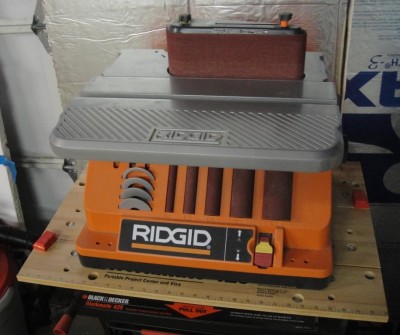
This benchtop oscillating spindle sander/ belt sander is very versatile. In fact, I’ve always wanted a floor-standing belt/ disc sander but I really don’t need one because this just takes care of all those functions. So, I might as well allocate those funds to something more urgent.
If you have something that works well for you, but you see they have a new gizmo out, what do you do with the old one? Could you have spent the money to gain a new capability you didn’t have before?
I like to stay with what’s already working for me, unless it will revolutionize the way I do things. Now, there are things that need an upgrade that aren’t working well for me, but if I’m fine with what I have, then I can allocate those resources elsewhere.
I find that most of the “new and improved” versions of things will only marginally save you time or improve the quality of your work. The way I see woodworking is I’m manifesting what I envision into an object. The tools I use get me there with varying degrees of accuracy or closeness to what I had in mind. If I have a major deficiency in an area like making curved cuts the way I want them, I would rather solve that than buy a slightly better tool I have already.
Dovetail Jigs
I’ve tried hand-cutting dovetails, and if I put the time in I can certainly do it. Some people just enjoy the process so that’s what they do. If I want 6 dovetailed drawers, I’m after the look. If I cut them by hand, I’d be doing a repetitive process for many hours, and that doesn’t make me very happy.
So I figured out I needed a way to cut good-looking dovetails in a variety of shapes and configurations. After doing my research (around 8 years ago), I decided to get the Jointech system. It had the best engineered mechanism, it was easy enough to learn (mine came with a video, and I saw the demo at The Woodworking Shows), and it was accurate. But the biggest selling point for me was its versatility; it could cut many different types of dovetails, even inlaid ones, without compromising the tool’s performance on any one of those tasks.
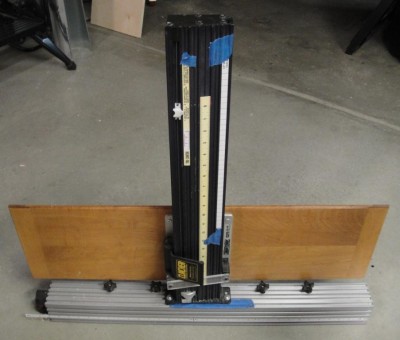
The Jointech system works really well for me so I never bother to explore other jigs and systems for creating dovetail joints.
I paid around $500 for the router table fence system and all the accessories I wanted. It continues to serve me well today, and it does everything I want. Plus I’m very used to how it works.
Every few weeks I get the tool ads in the mail with the latest and greatest dovetail jigs. Now the number of choices is just ridiculous from the Porter Cable models, to the Leigh, to the Veritas. I look at them of course, but I immediately dismiss the thought of buying one because the one I have works well. Sorry, tool companies…
This saves me quite a bit of time not paying attention to so many things.
Tools
I never really understood peoples’ desire to keep buying the same tool over and over again just because it has one extra feature, or it just got rated “Super Woodworking Magazine Winner!”.
For example, I have a DeWalt jigsaw. It’s ok at what it does; though it could use a better blade guide. The Bosch version they make today is what I would’ve bought 7 years ago.
But seriously, I’m not going to spend a few hundred bucks just to make this upgrade. When the DeWalt one gets busted or wears out then I’ll seek out the best one available to replace it.
Now the chisels I have aren’t exactly what you’d call fine woodworking chisels. They’re from a discount bin to begin with, and they get used for “demo” work, and yes, sometimes to pry stuff apart. That somewhat sharp edge just fits so perfectly between things that need prying.
Needless to say, on my Buy List is a good set of chisels.
I’ll do my research, float around some forums, see what works for people, and which ones are best at what tasks.
But once I buy them, I can safely ignore the chisel ads again, unless I spot something that represents a good leap in either time savings or quality of work.
I’m always looking to upgrade my existing tools, if it provides me with a better quality of cut or something worthwhile like a time savings. My current jointer, an 8″ Delta X5, is extremely easy to maintain and very trouble-free. I added a link belt, lined the cabinet with some sound-absorbent insulation, and used rubber washers on the cabinet assembly to improve the sound attenuation I wanted. But now I’m thinking of upgrading the cutterhead to a helix-style with small carbide inserts. If this improves the cut, and makes it easier to remove nicks that appear in the blade by simply rotating one of the inserts, then it would be a big enough reason to do the upgrade, since it’ll both save time of removing ridges in the stock and blade changes, and also improve the quality of what I do.
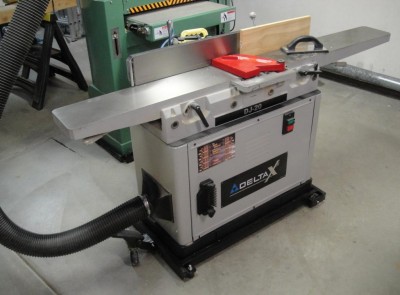
I totally love my 8” Delta X5 Jointer. I just use it and sort of take for granted that it’s dead accurate every time, and I have zero problems with it. I’ve already added a link belt to cut vibration, a mobile base, lined the cabinet with sound-absorbing specialty insulation panels, and my next upgrade may be a spiral cutterhead with replaceable carbide insert blades.
An upgrade to my sharpening method (currently using a granite plate with adhesive-backed sandpaper all the way to 3500 grit and a leather strop) to a slow-speed sharpening machine is under consideration. I’m pretty happy with what I’m doing now, but if this machine, even at a cost of several hundred dollars, can save me time and achieve the same results, may be worth it. I bet it would encourage more hand tool use too, which is often faster than setting up a power tool to do a quick job.
Specialty Tools
I always make room for specialty items that fill a void in what I already have. Sometimes buying a specialty tool for things you do a lot is totally worth it in time savings, as well as a focused quality; an example of this is a pocket hole machine with a router motor and pivoting bit to machine the pockets. For me, though, I’m good with the manual jig where you use a drill in a metal guide-sleeve to drill out the pocket.
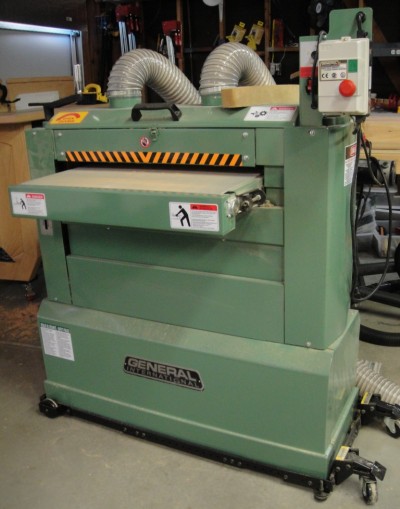
I do a lot of glue-ups that exceed the width of my planer. Rather than glue up 12” sections, plane and joint them flat before gluing them together, then using handplanes and a belt sander to flatten the panel, I just run them through the drum sander. A true time-saving tool well worth the money.
Now, in your woodshop design, I think you should think about some specialty processes you do all the time. Perhaps you make dovetails non-stop, and would like to do them by machine. Then maybe a dovetail machine commonly used in cabinet shops is for you. Insert a lot of Blum hinges? There are machines for that. Make a lot of repetitive holes? Maybe a Line Boring Machine needs a spot in your layout. Why settle for the standard list of shop tools? Never settle.
How I Figure Out What to Buy
Besides the occasional impulse buy that makes me happy, I have a bit of a system in my head that makes it easy to pass up all those ads, and still gets me the tools I really need and benefit from.
I simply focus on R.O.I., or Return On Investment.
Three Things:
- Accuracy/ Quality of my Work
- Time Saved
- Less headaches
If what I currently have kind of sucks, then I’ll look at the tool reviews for its replacement. If what I have is good but could be upgraded, I’ll either invent a jig to correct it or look for one at a place like Rockler.
If what I have works well, then I leave well enough alone. Only when a revolutionary version of what I have comes out will I consider replacing the existing.
WoodChip Tip: By the way, I rarely sell the old tool. It becomes a reserve if the other one should break, or a second tool with a different blade or setting.
Also, use what you’ve got until you can afford to buy, and if something will pay you back in $ earned, then give yourself permission to make the investment. But don’t go into debt to do it.
Most people buy as they can afford, but based on what they feel they want. By designing your workshop ahead of time, you’ll know what you need. That’s a significant difference in mindset, and really helpful when I’m shopping online or at Rockler. I still buy plenty of things, but they’re more targeted to benefit me daily.
In my Woodshop Design Outline (which I’d be glad to email to you, just see the form below this post), I list all the design categories of my shop, including all the tool categories. Under each category, list all the tools you both have and want. I usually put the ones I don’t have yet in a different font or italics, then I put a “1”, “2”, “3”, etc. to prioritize my purchases. For example, I might want a bandsaw before a miter saw, because I can use a circular saw and a jig or a table saw for crosscutting, but a bandsaw would correct the rough curved cuts that a jigsaw makes.
Just like you would write a budget or bill of materials, do the same for your future shop inventory, all as part of your workshop design. Let me know if I can be of help!
For more guidance in assembling your Woodshop Design, click on the Starting? Go Here! category and read those first.
Connect with me on Facebook, and follow me on Twitter for more ninja tips to Optimize Your Woodshop!
Gotta get more clamps,







 How I went from a cluttered and disorganized shop to a super-productive layout with a convenient dust collection and electrical set-up.
How I went from a cluttered and disorganized shop to a super-productive layout with a convenient dust collection and electrical set-up. 


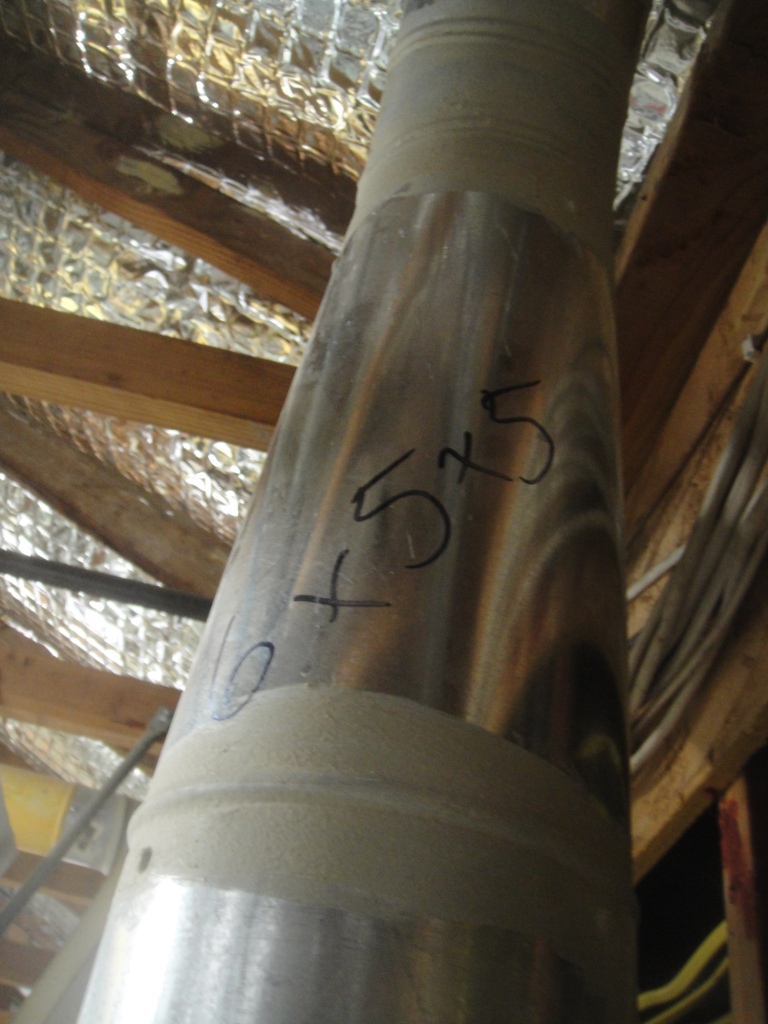
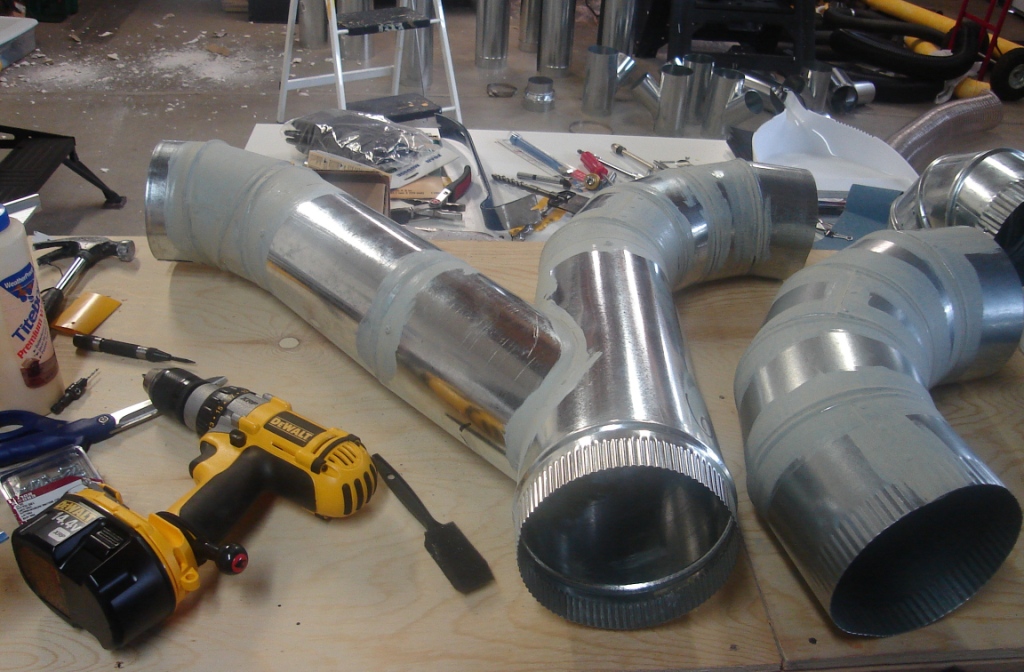
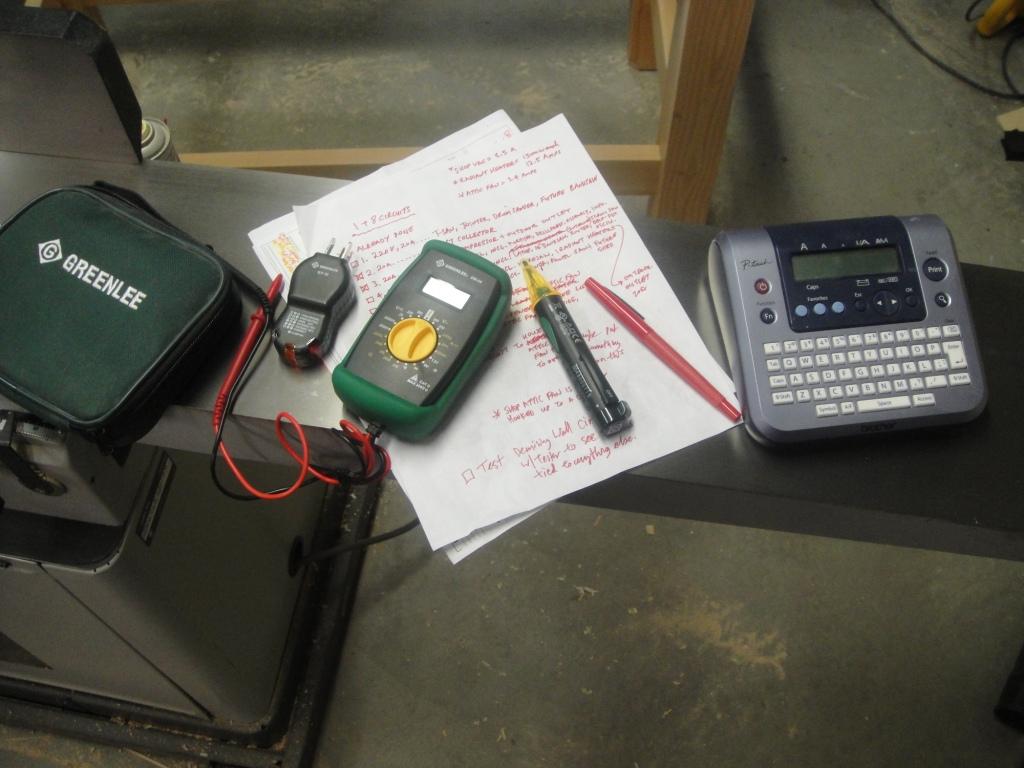




Use it up, make do or do without, what I say. There are some cool gizmos out there, but you hit the nail on the head. A 1940’s Unisaw still makes a beautiful cut, and, if that’s what you’ve got, there’s really no reason to upgrade. There have been improvements in some things, notably safety, for example, new types of dust collectors with lower and lower sized micron filters. Long story short, most things are “improved” because they put an overmold on a handle, or used a funky color to “modernize”.
Thanks for the article, good food for thought, followed by some inciteful comments. You have an intelligent following.
This is so true – most “new and improved” is just marketing hype. A true revolution in tools is rare. It does happen from time to time. At one time I had a radial arm saw but now improvements in the compound miter saw got me to dump the old radial safety hazard and replace it. Of course I am now hoping that my current chop saw will die so I can get a sliding compound miter saw.
I took a class in hand tool sharpening last year and the instructor had a Tormek sharpening system and let me tell you it is a sweet machine. If I had the budget I’d buy one in a heart beat.
One thought about power vs. hand tool: I find that if I need to do a lot of something or need to turn things out fast that my power tools are the best but for those one off more artistic peaces that there is nothing quite as soul satisfying as shaping wood with a hand tool. You’re closer to the wood, there is little noise and very little if any dust.
I have that same Ridgid oscillating spindle sander. Surprisingly, it’s the first stationary sander I’ve used since woodshop in junior high. It’s awesome-sauce. There have been occasions where I could’ve used a spindle only sander but it’s rare.
In general, I’m in complete agreement. Tool “revolutions” don’t come along to often and the new and improved versions are only marginally better than what you’ve already go in the shop. 5 years is nothing for a solid built tool. Many should last a generation. If you must have the next best tool and don’t want to keep a spare, make every effort to find good home for your old ones.
btw, I’m jealous of your shop real estate. My shop shares the same space with 2 cars & laundry so everything must collapse into a dolly or be shelf storable.
Did you know you can convert it to a spindle-only tool? But I really use it in the belt-mode 80% of the time.
I guess the good news is if you buy good tools they’ll serve you well for more than a decade, and so woodshop evolution can be largely cumulative and ever-improving without having to re-buy much.
Yeah, the whole reason I bought my house was the 3-car garage. The house itself is around 1,700 sq. ft., and most houses that size have a 2-car garage. Plus, the way the trusses are designed it has no post in the middle. Once I saw the garage, that was it. Luckily, I like the rest of the house as well…but I have a feeling I would’ve justified it somehow anyway.